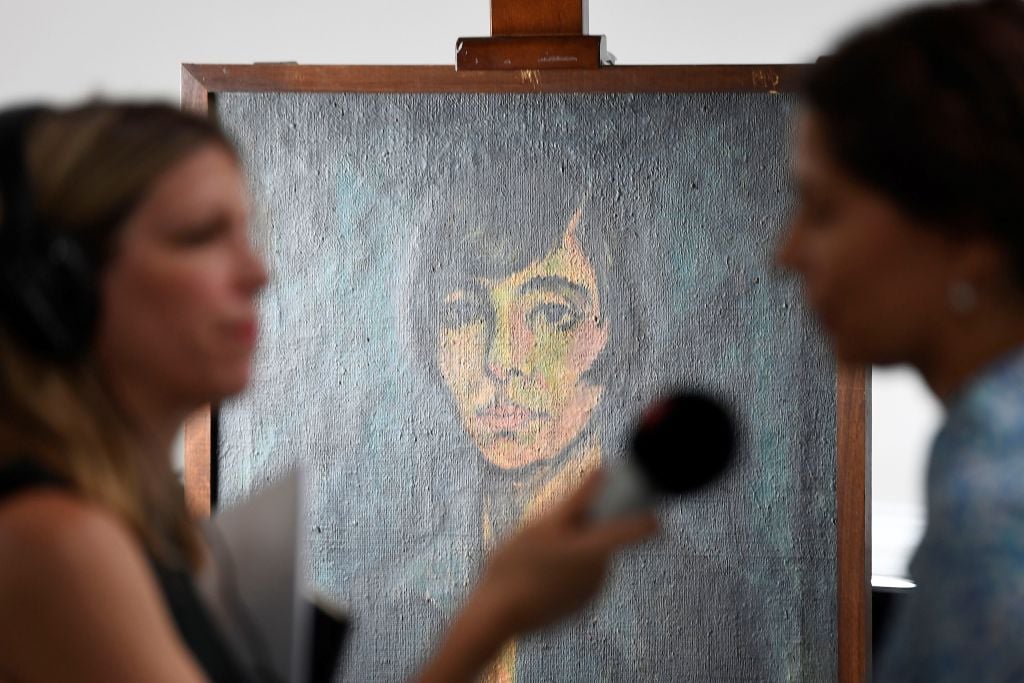
After a lengthy legal tug-of-war, the controversial Gurlitt collection has arrived at the Kunstmuseum Bern. Items from the trove were presented to an eager press by museum officials on Friday.
The collection was compiled by Hildebrand Gurlitt, one of the art dealers selected by the Nazis to sell looted and undesirable “degenerate” art abroad. The collection was inherited by Gurlitt’s reclusive son Cornelius who hoarded over a thousand artworks in his Munich apartment until authorities stumbled upon the trove in an unrelated tax investigation in 2012.
The Museum of Fine Arts Bern (Kunstmuseum Bern) that will host the spectacular estate of Cornelius Gurlitt. Photo: Fabrice Coffruni/AFP/Getty Images.
Before Gurlitt died in May 2014 at the age of 81, he surprisingly named the small Swiss museum Kunstmuseum Bern as the sole recipient of the entire collection. The shocking bequest launched a debate over the morality of institutions accepting and showing suspected Nazi loot, and provoked intense criticism from Jewish groups.
Then came a protracted legal challenge by Gurlitt’s relatives, hoping to get a part of the famed art collection.
Speaking to the German art magazine Monopol, museum director Nina Zimmer emphasized, “Only what is proven not to have been looted will come into Kunstmuseum Bern’s possession.”
An official diplays the Landschaft mit Segelbooten, a gouache by German expressionist August Macke from the estate of German collector Cornelius Gurlitt, during a press preview of the first masterpieces of the estate of Gurlitt at the Museum of Fine Arts Bern (Kunstmuseum Bern) on July 7, 2017 in Bern: Photo: Valeriano di Domenico/AFP/Getty Images.
On Friday, the museum showed off its newly acquired pieces including a gouache by August Macke, a woodcut by Ernst Ludwig Kirchner, and a watercolor by Otto Mueller. Also on view were works on paper by Otto Dix, Emil Nolde, and Franz Marc.
Now that the works are in Bern, the museum has scheduled an exhibition focusing on “degenerate art” in November. The first portion of works have been delivered to the museum and will now undergo examination, cataloging, and cleaning by the conservation department. But that’s not all. Over the course of the summer, the museum expects an additional 350 works—mostly works on paper—to be delivered.
An official displays a work by Otto Mueller during a press preview of the first masterpieces of the estate of Cornelius Gurlitt at the Kunstmuseum Bern on July 7, 2017 in Bern. Photo: Valeriano di Domenico /AFP/Getty Images.
Museum staff have a lot of work to do if the hoard is to be ready for display by November. Cornelius Gurlitt paid little attention to basic maintenance practices, in many cases he stored the works in antiquated acidic protective sheets, stacked in boxes on top of each other. Present-day conservators use drastically different materials. Those at the Kunstmuseum Bern are said to be especially concerned about tiny mold spores that have attached themselves to the surface of works as a result of moisture from their storage.